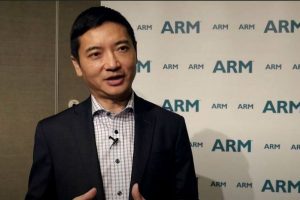![PR2-AEM1x940_LRES[1]](https://static.electronicsweekly.com/wp-content/uploads/2016/09/26154506/PR2-AEM1x940_LRES1-300x208.jpg)
The AEM10940 aims to maximize the efficiency of power-scavenging devices.
The chip has a 94% efficient power boost converter, along with voltage reference, energy management and LDO regulator elements.
The IC can be brought into active operation even when there is minimal energy left – an input voltage of just 380mV and a mere 11μW of power proving to be more than sufficient.
The IC harvests available input power up to 50mW from an allocated energy source, such as a photovoltaic cell.
Its boost converter (which has an input voltage range that spans from 100mV to 2.5V) exploits this for the rapid charging of any connected energy storage reserve, such as a Li-Ion battery, thin film battery, or conventional-/super-capacitor.
The 2 embedded LDO regulators deliver close to 98% current efficiency across a broad load range. Respectively, these have a low voltage and a high voltage supply associated with them. The low voltage supply (1.8V), which can provide up to 10mA load current, is typically used to drive the system’s microcontroller. The high voltage supply, which is configurable between 2.2V and 4.2V, can sustain up to 80mA of load current and will normally take care of tasks like powering the system’s wireless transceiver (which could be based, for example, on either BLE, Zigbee, SigFox or LoRa).
“The AEM10940 will be pivotal in meeting the demands of a host of new systems where every mJ of energy is certain to be precious. The versatility of this IC means it will work with all types of DC energy harvesting apparatus and all types of energy storage technology,” says Thierry Keutgen of e-peas.
 Electronics Weekly Electronics Design & Components Tech News
Electronics Weekly Electronics Design & Components Tech News



